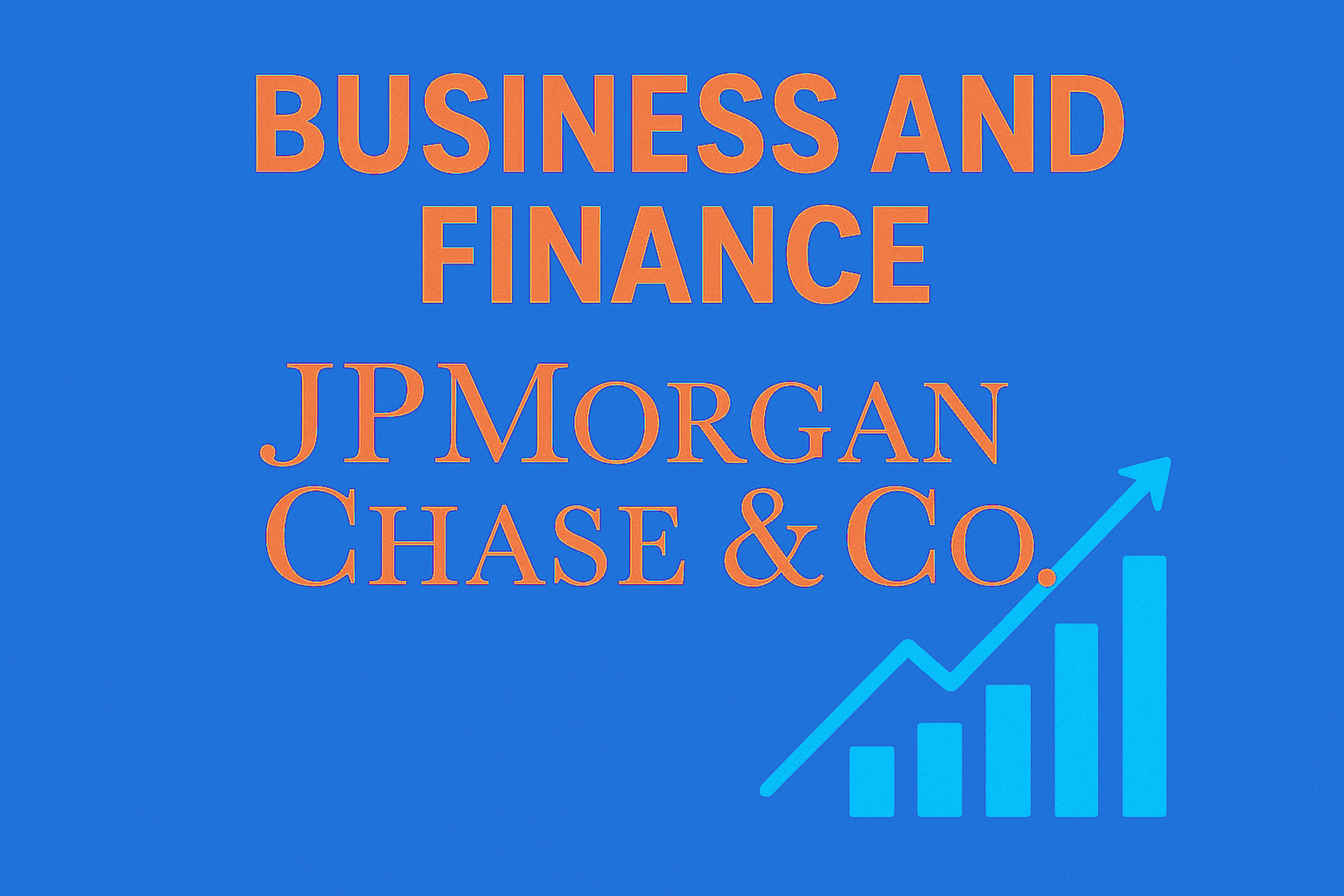A Comprehensive Overview of the Banking Giant
Business And Finance: JPMorgan Chase & Co., the largest bank in the United States and the world’s biggest by market capitalization as of 2024, stands as a towering figure in the global financial landscape. Headquartered in New York City, JPMorgan Chase is a multinational finance corporation with a rich history that dates back over two centuries, evolving from some of the oldest financial institutions in the country into a diversified powerhouse in banking and financial services.
Historical Roots and Evolution
The company’s lineage traces back to the Bank of the Manhattan Company, founded in 1799 by Aaron Burr, and Drexel Morgan & Co., established in 1871 by J.P. Morgan and Anthony Drexel. J.P. Morgan, an influential American financier, was instrumental in shaping the U.S. financial industry through his involvement in major railroad reorganizations and industrial consolidations. The firm he helped build played a critical role in the creation of U.S. Steel, the world’s first billion-dollar corporation.
Over the 20th century, J.P. Morgan & Co. solidified its place as a national purveyor of commercial, investment, and private banking services. Through mergers and acquisitions over the decades, including the significant 2000 merger with Chase Manhattan Corporation, JPMorgan Chase emerged as a one-stop financial services giant, offering investment banking, commercial banking, asset management, and financial transaction processing.
Core Business And Finance Operations
JPMorgan Chase operates through four main segments:
Consumer and community banking, corporate and investment banking, commercial banking, and asset and wealth management. Its consumer banking services are offered under the Chase brand in the United States and the United Kingdom. Providing retail banking and credit card services to millions of customers.
The investment banking division is recognized globally for its expertise in corporate advisory. Also mergers and acquisitions, sales and trading, and public offerings. The firm also manages one of the world’s largest private banking and asset management businesses. Thus catering to institutional clients and high-net-worth individuals.
Financial Resilience and Recent Performance
JPMorgan Chase has demonstrated remarkable financial strength and adaptability through various economic cycles. During the 2007–08 financial crisis the company thus strategically acquired distressed assets of Bear Stearns and Washington Mutual, bolstering its market position.
In 2023, amid the banking crisis, JPMorgan Chase acquired the assets of First Republic Bank after the latter’s failure. Showcasing its ability to capitalize on market disruptions and enhance its footprint.
The bank’s financial results in 2025 have been strong. With notable growth in investment banking fees, trading revenue, and net interest income. While trading revenue surged 15%, driven by gains in both fixed income and equity sectors. While investment banking fees increased by 7%, supported by a rise in mergers and acquisitions and debt underwriting. Though the company also revised its 2025 net interest income forecast upward to approximately $95.5 billion. Reflecting confidence in the ongoing strength of the U.S. economy despite significant risks such as tariffs and geopolitical uncertainties.
Leadership and Market Position
Led by CEO Jamie Dimon since 2005, JPMorgan Chase benefits from consistent leadership that has steered the bank through volatility and change. Dimon’s cautious, realistic economic outlook balances optimism about U.S. economic resilience with awareness of challenges like fiscal deficits and trade policies. Under his guidance, the bank has maintained a “Fortress Balance Sheet,” emphasizing capital strength and risk management that has earned investor confidence even in uncertain times.
As the largest of the “Big Four” American banks, along with Bank of America, Citigroup, and Wells Fargo, JPMorgan Chase plays a systemically important role in the global financial system. Its size and influence have attracted and enhanced regulatory oversight, but also offer scale advantages in service capabilities and market reach.
Global Expansion and Innovation
JPMorgan Chase has a significant international presence with banking operations in critical financial markets across Asia, Europe, and the Americas. The bank continues to expand its corporate banking footprint in the Asia-Pacific region, increasing its staffing by 20% to meet growing client demand in markets like China and India.
Innovation https://scienceandaerospace.blog/blog/the-life-and-innovations-of-nikola-tesla/ in financial technology is another pillar of JPMorgan’s strategy. In 2025, the bank focuses on trends such as faster cross-border payments, artificial intelligence integration, and advanced cybersecurity measures to enhance customer experiences and operational efficiency. These developments position JPMorgan Chase not only as a banking giant but also as a fintech innovator.
Legacy of J.P. Morgan
The name behind the bank, John Pierpont Morgan (1837–1913), remains synonymous with American finance. He famously orchestrated rescues during financial panics. Notably in 1893 and 1907, using his influence and capital to stabilize banking institutions and the broader economy. His legacy is embedded in the firm’s culture of leadership and financial stewardship.
Morgan’s interventions during crises helped shape the modern U.S. financial system. Thi laid the foundation for the creation of the Federal Reserve in 1913. The iconic “House of Morgan” at 23 Wall Street remains a symbol of the bank’s historic role in American finance.
Challenges and Future Outlook
Despite its dominant position, JPMorgan Chase faces challenges typical of global financial institutions. Regulatory scrutiny, market volatility, changing geopolitical landscapes, and evolving consumer preferences require ongoing strategic agility. CEO Jamie Dimon has warned about risks associated with tariffs, fiscal policies, and asset valuations, emphasizing prudent risk management.
JPMorgan Chase’s diversified services, solid capital position, and tech investments create a solid growth platform.
In summary, JPMorgan Chase & Co. is a titan of global finance with a storied past and a dynamic present. From its historical origins in 18th-century banking to its modern status as a financial services behemoth. Banking plays a vital role in shaping markets, facilitating commerce, and innovating financial technology worldwide. Its resilience through crises, commitment to expansive services, and strategic. JPMorgan Chase & Co. This has lead it to position itself at the forefront of banking for years to come.
Sources:
reuters




